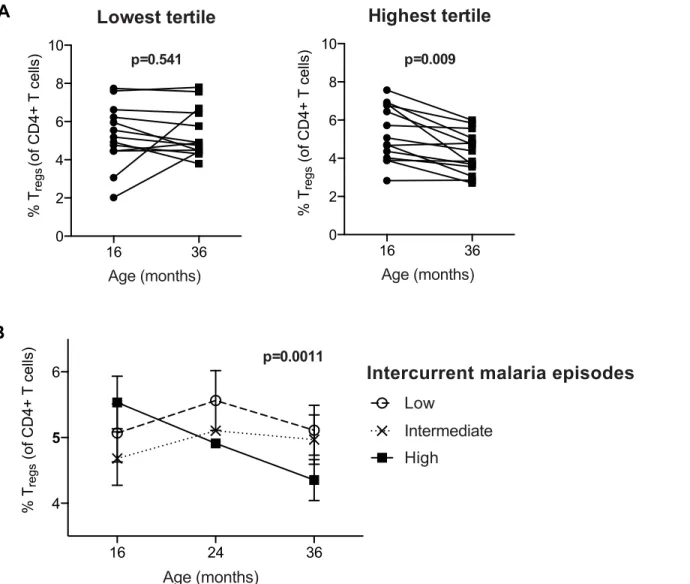Decline of FoxP3+ Regulatory CD4 T Cells in Peripheral Blood of Children Heavily Exposed to Malaria.
Texto
Imagem




Documentos relacionados
A trend of the same magnitude is seen in the variation of malaria prevalence in all ranges of temperature variation, except for the change from intermediate to high risk transmission
Objective: To investigate the peripheral Th17 cells and CD4 + CD25 + Foxp3 + regulatory T (Treg) cells and the expression of cytokines in the serum of AR patients.. Methods:
The high incidence of pneumonia, added to the prevalence of risk factors in children (malnutrition, overcrowding, low level of care provided to children in the
The immediate objectives of malaria control include (a) reduction of malaria transmission levels in epidemic areas, (b) reduction of malaria morbidity and mortality,
Comparisons of the percentage of regulatory T cells (CD4+ gate) from peripheral blood of healthy dogs (PBMC control), peripheral blood of dogs with multicentric
Effects of routine prophylactic supplementation with iron and folic acid on admission to hospital and mortality in preschool children in a high malaria transmission
A ideia de realizar este projeto de investigação partiu da atual polémica de restruturação da Colina de Santana e o consequente destino dos Hospitais de São José, Santa
Higher T cell proliferation has been observed in cord blood- derived mononuclear cells compared to peripheral blood-derived cells in response to one of the major milk allergens
